The Rome neighborhood
of Montesacro and the next suburb
of Val Melaina played an important role in the Resistenza, the
Italian resistance against fascism, both for their location, which
at that time was definitely peripheral, and for their proximity
to the University Town, which was a center of the action against
fascist dictatorship and later, against Nazi occupation.
Fourteen residents of Montesacro and Val Melaina were murdered
by the fascists because of their fight for the Liberation, four
of them were under twenty years of age. Their names are remembered
in a 1945 plaque in Via
Maiella, near the corner with Corso Sempione, which has been restored
after being set on fire and badly damaged by unidentified cowards
in the night between 21st and 22nd
October 2004.
Seven of the fourteen martyrs are among the 335 victims
of the Fosse Ardeatine
massacre on March 24th, 1944: Ferdinando
Agnini, Orlando Orlandi
Posti, Vito Artale, Aldo
Banzi, Renzo Piasco, Antonio
Pistonesi and Filippo Rocchi. Six
antifascists more were shot in Forte Bravetta: Riziero
Fantini, Raffaele Riva, Antonio Feurra, Italo
Grimaldi, Giovanni Andreozzi and
Paul Lauffer, whereas the fourteenth,
Amilcare Baldoni, was probably shot
in the Sabina area, or he could be one of the unidentified victims
of Fosse Ardeatine massacre.
At Val Melaina, near 31, via Scarpanto, a memorial
plaque can be seen, placed on April 25th,
1954, remembering the four fallen partisans of the suburb: Riziero
Fantini, Antonio Pistonesi, Renzo Piasco and Filippo Rocchi. Even
this plaque was damaged by unidentified cowards that in the night
between 25th and 26th
April 2019 had set on fire the wreath placed on the occasion of
the anniversary of Liberation. The plaque was promptly restored
on the occasion of Labour Day, on 1st May (see the news
on la Repubblica.it).
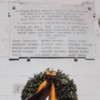
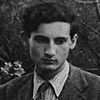
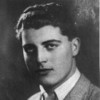
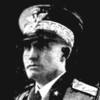
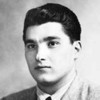
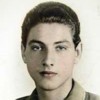
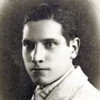
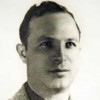
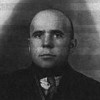
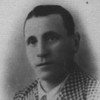
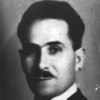
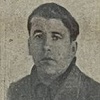
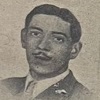
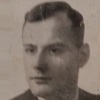
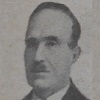
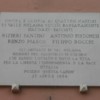
The
Resistenza at Montesacro
In 1942, in the last years of the fascist dictatorship, which
had severely repressed the opposition, a restart of the struggle
against the regime took place in Montesacro, seeing as key players
the long-standing anti-fascists, often from other regions, who
had taken shelter in a Rome in order to escape persecution in
their home areas, and many of the workers who had built the neighborhood,
which lived, among others, in quickly-built houses in via Nomentana
on the corner of via Pietralata. Beside them the new anti-fascists
arose, young workers, high school and college students, raised
with the student protests.
The downfall of fascism, with Mussolini's capture on July 25th,
1943, was welcomed with joy in Montesacro, as throughout Italy,
as evidenced by Beppe Fenoglio, who
in his 1959 novel Primavera di bellezza (Spring of Beauty),
describes his experience of military service in the neighborhood,
as a cadet of 34th infantry regiment of Livorno
Division, on duty in the primary school Don
Bosco, amongst citizens who destroyed
the emblems of the fascist regime and praised the soldiers
as opposed to the fascist militia and to the infamous PAI, the
Italian Africa Police. The local group of Montesacro and Val Melaina
subsection of fascist party were assaulted, the flags were burnt
out and some documents were destroyed. In Val Melaina two red
flags were hoisted on both sides of the main gate of the block.
The capture of Mussolini gave a new impulse to the fight against
fascism, in which among the others, university students stood
out; many of them were medical students and former high school
students of Liceo Ginnasio Orazio,
as Ferdinando Agnini, Gianni Corbi (who
in 1968 became the editor of news magazine "L'Espresso"),
Nicola Rainelli and Orlando Orlandi Posti, both members of Partito
d'Azione, Franco Caccamo, Giorgio Lauchard, Girolamo Congedo,
Mario Perugini, Lino Papio and Luciano Celli, linked by bonds
of friendship even before devoting themselves to political struggle.
The younger of these young men, had formed a group that used to
meet at "il bell'orizzonte" ("the Beautiful
Horizon") a small beach on river Aniene, close to Ponte Nomentano (link to my webpage on the bridge), also
organizing a team of swimmers called “I caimani del bell’orizzonte"
("the Caimans of Beautiful Horizon").
Ferdinando Agnini, with 29 members of his group, almost all from
Montesacro, on October 31st 1943 founded ARSI, Associazione
rivoluzionaria studentesca italiana (Revolutionary Association
of Italian Students), which from November 18th,
1943 published the journal "La
Nostra Lotta" ("Our Fight"), probably
the first illegal student newsletter ever printed in Italy. The
group, with distribution of pamphlets and commando actions, managed
to interrupt the courses and exams of the faculties of medicine,
science, law, literature, architecture and engineering.
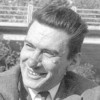
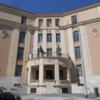
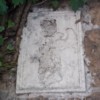
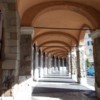

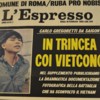
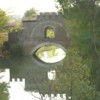
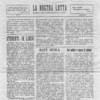
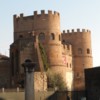
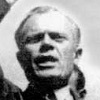
After September 8th
1943 armistice, the Roman citizens hindered the access of nazi
troops into the city, engaging on September 10th the battle of Porta
S. Paolo. Between them, many Montesacro and Val Melaina residents,
as Orlando Orlandi Posti, Renzo Piasco, Riziero Fantini, Giuseppe
Gnasso, Corrado Fulli, Alvaro Vannucci, Mario Gambignani and Dario
Funaro, 13 years old, who one month later was deported and killed
in Auschwitz.
Sandro Pertini, Bruno
Buozzi, Carla Capponi, Adriano Ossicini, Vasco
Pratolini, Aldo Natoli, Giaime
Pintor and many others
also took part in the battle. On the occasion the Roman antifascist
students, organized in OLU, Organizzazione Liberi Universitari
(Free University Students Organization), attacked the campus barrack
and seized a significant amount of weapons, (500 muskets and several
cases of hand grenades), which were distributed to the fighters
at Viminale, to San Lorenzo residents and to the partisan bands
of Montesacro. Other weapons were left on the place because it
was impossible to find means of transport to carry them. In the
afternoon of September 10th, after the capitulation of the
serviceperson joining the Resistenza,
the civilians kept on fighting, among other places at Prati Fiscali,
near Montesacro, trying to close down via Salaria road, with Orlando
Orlandi Pasti, Antonio Pastonesi, Nicola Rainelli, Franco Caccamo,
Luciano Celli and Ennio Petrignani. After a two hours gunfight,
the Montesacro partisans ran out of munitions and were forced
to withdraw. In the clash probably three German soldiers were
killed.
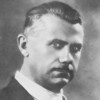
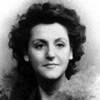
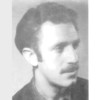
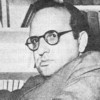
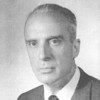
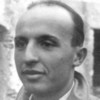
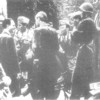
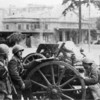
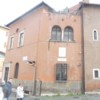
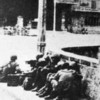
On October 16th
a raid in the Ghetto of Rome
occurred, and 1014 Jews were captured and deported to Nazi concentration
camps, from which only sixteen of them came back. Actually 57%
of the victims of the roundup were captured outside the Ghetto,
also in Montesacro, where eight persons were captured, belonging
to four families (Spizzichino), including Funaro, Di Veroli
and Cacaurri. The thirteen year old Dario Funaro, above mentioned
as a participant in the Battle of Porta
San Paolo, was passing by Piazza Sempione while the Nazis
were seizing his family into
a truck and tried to intervene, but he himself was captured. Dario.
his brother Adolfo, his father Leo, his mother Teresa Di Castro,
his uncles Ada, Ettore and Giuditta Funaro and his grandmother
Perla Cava were deported and killed at Auschwitz extermination
camp.
On Wednesday January 16th, 2019, at 10 am, in front of
Funaro house, in 15, via Maiella,
four Stolpersteine were
laid to commemorate the four members of the family who lived there,
with the participation of teachers and students of the classical
and linguistic lyceum Aristofane, who have significantly contributed
to keep the memory of this family overwhelmed by the Shoah.
During nazi occupation, in Montesacro, as in other areas of Rome
the partisans attacked Nazi convoys, which were blocked piercing
their tires by four-pointed nails, made
by Cesare, a blacksmith near Nomentano bridge. Many acts of sabotage
against the Nazis were performed on via Nomentana road (including
against "campo dux" a nazi and fascist headquarters,
placed between Montesacro, Settebagni and Castel Giubileo), in
Prati Fiscali, San Basilio and Pietralata. On October 19th a
nazi motorcyclist was killed and German officers' cars were attacked
with machine gun fire. The partisans also covered with arms the
assaults of women at the ovens who supplied the bread to the Nazi
occupiers.
On October 22nd a group of partisans of Movimento
Comunista d'Italia - Bandiera Rossa (Communist Movement of
Italy - Red Flag, a movement dissident from Italian Communist
Party), attacked Forte Tiburtino in order to seize weapons, clothes
and food left by the Italian Army. The SS sentinels countered
them and a gunfire occurred, causing several casualties, until
19 partisans were catched by the nazis and taken to trial in the
Talenti estate villa. Ten of them were sentenced
to death and shot at Ponte Mammolo, their names are: Orlando
Accomasso, Lorenzo Ciocci, Mario De Marchis, Giuseppe Liberati,
Angelo Salsa, Marco Santini, Mario Splendori and Vittorio Zini,
of Movimento Comunista d'Italia, Andrea Chilastri, of Catholic
Communists group, and Fausto Iannotti, who was passing accidentally
through via Tiburtina. The other arrested anti-fascists were deported
on January 4th in the Mauthausen concentration
camp: Franco Venturelli, Pietro Gismondi, Mario Prestinicola,
Alfredo Petrucci, Gaetano Nugnes, William Mattiozzi, Antonio Risi,
Pietro Mancini, Carlo Maccione, along with Fernando Nuccitelli.
Five of them died in Mauthausen.
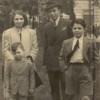
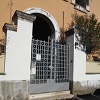
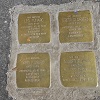
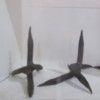
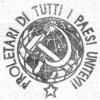
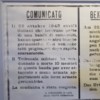
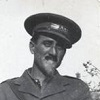
On November 20th,
at dusk, Rainelli, Palumbo, Palomba, Petrignani and Celli held
up by the nails for three hours a column of 25 German lorries,
on the military road San Nicola-Motte, which linked via Tiburtina
to via Salaria. In mid December the same team, with the addition
of Franco Caccamo, attacked near San Basilio a nazi patrol of
20 soldiers.
On December 14th the partisans of Montesacro scored
an attack to the "consul" of fascist militia Nussu,
who lived in Via Maiella, and boasted that he could leave his
body guard beyond Tazio bridge, and was instead hit by six bullets.
Among other actions, the telephone cable that linked the Nazi
headquarters of Monterotondo and Frascati, which was essential
for the connection with the war front, was repeatedly cut out.
This sabotage was performed, among others, by the fifteen-year-old
Alvaro Vannucci, who also engaged himself of weapons procurement,
in a deserted depot of Italian army, in front of Casal de' Pazzi.
Among other actions the young partisans performed leafleting,
which was anyway dangerous and supported by armed comrades, like
in cinema Rex at corso Trieste, where a reaction of fascist militant
occurred. A further activity was rescuing the allied prisoners
of war who escaped from nazist and fascist prison camps. Even
very young boys undertook acts of sabotage, which, even being
lesser, were still risky, as to shift the road signs placed by
the Germans for their vehicles.
The weapons, hid in the Rainelli family cottage at 8, Via Monte
Argentario, mainly came from the deserted barracks of 8th
Corps of Engineers unit, at Batteria Nomentana. The Caymans swam
across Aniene river in the depths of winter to carry these weapons
to Montesacro.
Another group of resistance fighters of the neighborhood was formed
by members of illegal Communist Party (PCI), including Giorgio
Onofri, Riziero Fantini and Mario Menichetti, a mason from Trastevere
recently moved to Val Melaina, already sentenced in 1925 by the
fascist regime to four years of confinement in Ustica island,
and Vittorio Mallozzi who had fought
and had been wounded with the International Brigades during Spanish
Civil War.
The young anti-fascists of the neighborhood gathered at Rainelli
cottage: the family had moved to the freed Southern Italy, following
the head of the family, an official of the Ministry of Transport,
while young Nicola, a twenty-two years old medical student, stayed
in Rome with his sister Lina, and used his family villa as headquarters
for the group of young partisans, including Ferdinando Agnini,
Orlando Orlandi Posti, Antonio Pistonesi, Renzo Piasco, Paul Lauffer,
Franco and Sara Caccamo, Amorina Lombardi, Luciano Celli, Roberto
Croce and many others.
On Sunday, October 27th, 1943 the first sweep in Rome
took place, in order to capture dodgers to the fascist draft,
to be sent to hard labour in Germany. More than a thousand men
of Montesacro, Tufello, Val Melaina and Pietralata were taken
and forced to walk for 6 kilometers towards Mentana until Casal
Coazzo, in San Cleto area, then 346 of them were sent to hard
labour
The nazis had established one of their headquarters in primary
school Don Bosco, and in a cottage in via Nomentana, in front
of via Levanna, a former depot for the nearby "Campo dux",
a temporary jail for the arrested antifascists was made, from
which they were later on transferred elsewhere.
The news of repression which had already taken place in Oslo and
Prague universities, convinced the anti-fascist students of the
need to join forces to protect the opponents from Nazi-fascist
persecution. Therefore, on January 2nd 1944 afternoon, in an apartment
in 112, via Flavia, students of the
faculties of Engineering, Law and Statistics, together with several
teachers, ARSI members Corbi and Agnini, along with students of
PCI (Italian Communist Party), Movement of Catholic Communists,
PSIUP and Action Party, gave birth to the CSA, Comitato Studentesco
di Agitazione (Student Committee of Agitation), leaded by young
Communist Maurizio Ferrara,
responsible or the Technical commitee, also including Gianni Corbi
and Ferdinando Agnini (ARSI), Dario Puccini and Carlo
Lizzani (PCI, Italian Communist Party), Paolo Moruzzi and
Carlo Franzinetti (MCC, Catholic Communists Movement), Giorgio
Lauchard and Giorgio Conforto (PSIUP, Italian Socialist Party),
Matteo Cirenei, Pier Luigi Sagona and Luigi Silvestri (P d’A,
Action Party) and some Social Christians. The first action of
ARSI was a protest at the inauguration ceremony of the academic
year, in the presence of fascist and nazist authorities: the student
in the Great Hall started to sing "La Marseillaise".
CSA organized a students' strike at Rome University on January
29th, against the decree of the Dean and of
the Ministry for National Defense of November, 1943, which excluded
from the exams the students who did not respond to the call to
arms of the fascist Republic.
The day of the strike, in San Pietro in Vincoli, at the Engineering
Faculty of the University, Ferdinando Agnini and Orlando Orlandi
Posti took part in the armed picket, which forced at gunpoint
the Tax Police agents who were on guard duty to open the gates,
which had been barred, and cut phone cables off. As the police
burst in, 600 demonstrators managed to escape, taking shelter
in Colle Oppio, but some of the students who managed to flee were
anyway identified by police and fascist spies. A large group of
students of Dante Alighieri secondary school on humanities, led
by Carlo Lizzani, Massimo Gizzio and Vincenzo Lapiccirella, carried
out a demonstration in piazza della Libertà. A fascist
gang shot the students, hitting the eighteen year old Massimo
Gizzio, who died, after a three-days agony in Santo Spirito
Hospital. Since 1949 a plaque
remembers him in via Federico Cesi, where he was murdered. Gizzio
had been sentenced the previous year for anti-fascist activities
by the Fascist Special Court.
In mid-February 1944, ARSI merged into the Unione Studenti
Italiani (Italian Students Union), joined by all the
anti-fascist parties. The reasons were published March 26th,
1944 in the journal "La Nostra Lotta".
The
busts of anti-fascists at Montesacro and Val Melaina
The acts of war and sabotage against the nazis roused their reaction.
The partisans of Montesacro had been planning attacks to Rome-Florence
railway at Batteria Nomentana and to a fuel depot on the left
bank of the river, but in the space of two months, the nazi busts
reduced drastically their ranks and thwarted their plans. Lacking
the collaboration of the neighborhood's people, which were instead
definitely hostile, the Gestapo could arrests many patriots thanks
to infiltrators, who received from 2 to 12 thousand liras for
every partisan denounced. Among the spies were Franco Sabelli,
Federico Scarpato, nicknamed by the Nazis "Fritz", and
Armando Testorio, which in via Tasso
prison was nicknamed "the soldier" because he used to
wear a uniform. Testorio was the only one of the three who lived
in the neighborhood, since he was infiltrated in Val Melaina after
San Lorenzo bombing, after which he was evacuated. The moral value
of the spies comes out from the many testimonies of their victims
and of their dear ones, relating of money extortion in exchange
for favours, which were never granted, of unneeded beats and housebreakings
in the flats which were left empty, using the keys stolen to the
prisoners. Testorio and Sabelli were arrested after the Liberation
in Tivoli, while arguing over the sharing out of the reward they
got for denouncing the partisans, and were shot by the British
on June 26th, 1945 at Forte Bravetta. Scarpato
was sentenced to death by the Military Court of Rome and shot
in the same place on April 26th, 1945.
The same military court, in the same trial, sentenced another
spy, Aristide Balestra, to twenty years' imprisonment. Balestra
ran a billiard room in the area of via Gallia, and denounced to
the Nazis two anti-fascists who frequented it, the brothers Adolfo
and Alfredo Sansolini, who were both taken to via Tasso, and later
murdered in the Fosse Ardeatine.
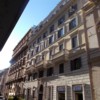

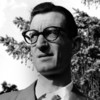
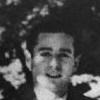
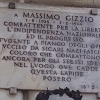
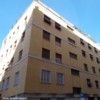
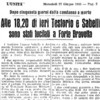
On 9th
December, 1943 Vito Artale was arrested, then the night of December
21s, 1943 the first big roundup started in
Montesacro and Val Melaina: Italo Grimaldi had entrusted his butcher's
boy a machine gun to be delivered to comrade Lucci, but maybe
the boy was shadowed, and Lucci was arrested. Also the tip-off
of a certain Luigi Guadagni was decisive. When, on December 20th,
the fascists broke into Grimaldi shop, he tried in vain to destroy
a list of contributions made by the members of the clandestine
cell, to support Lucci's family. The list was used by the OVRA
(fascist political police) for December 23rd
roundup, that had as victims Riziero Fantini, with his sons Adolfo
and Furio, Raffaele Riva, Filippo Rocchi, Antonio Feurra, Giovanni
Andreozzi and Mario Menichetti, all "long-lasting" anti-fascists.
Riziero Fantini, Italo Grimaldi and Antonio Feurra, shot in Forte Bravetta on December 30th
1943, were among the first victims of Roman resistance. The newspaper
"Il Messaggero" of January 1st,
1944 reported the news this way: "Three executions for
acts of violence against the German armed forces (...) The sentence
was carried out yesterday". On December 28th,
two days before Forte Bravetta shootings, in Reggio Emilia firing
ground the seven Cervi brothers,
Gelindo, Antenore, Aldo, Ferdinando, Agostino, Ovidio and Ettore,
had been shot (see my webpage
about them).
Also Raffaele Riva and Giovanni Andreozzi were shot in Forte Bravetta,
on January 31st, 1944 along with eight other
comrades, including Vittorio Mallozzi, "for preparing
acts of sabotage against the German armed forces and for leading
other attacks against public order of the city of Rome."
After the shootings of Forte Bravetta, the families of some of
the victims, Riva, Grimaldi, Fantini and Feurra, with the help
of the Resistance and some employees of Verano cemetery, managed
to enter at night in the cemetery to exhume the bodies which were
anonymously buried in mass graves, and so they were able to identify
them by documents or clothes they were wearing. A few months after,
the families of Fosse Ardeatine victims had to endure, openly,
and with the help of a medical examiner, the same operation of
identification, which thwarted the Nazis attempt to hide their
crime.
On February 3rd 1944 the nazi and the fascists
carried out one more roundup under tip-off of the spy Armando
Testorio, mainly targeting the new anti-fascists. The fascists
blocked the accesses to the neighborhood up, but Orlando
Orlandi Posti somehow became aware of the danger and ran through
the quarter to alert, one by one, all the comrades he managed
to reach. Thus many escaped the arrest: Ferdinando Agnini in via
Monte Tomatico, Franco Caccamo in via Peralba, Roberto Croce in
via delle Alpi Apuane, Emilio Palombo in viale Carnaro, Luciano
Celli in via Montecristo, Ennio Petrignani in via Monte Bianco,
which together with Orlandi Posti could evacuate the hidden weapons
and ammunition.
Nicola Rainelli, Luciano Celli, Franco Caccamo, Aldo e Mario Gaudiano
found refuge in Angeli Custodi
Church, by the parish priest Father Fiorello Piersanti, who hid
them on the dome of the church, while Paul Lauffer, hiding in
Rainelli house, was beaten and arrested. Amorina Lombardi, in
the same cottage, escaped the arrest posing as a doctor on a domiciliary
visit. Posti Orlandi, after saving his comrades from the raid,
made the mistake of passing by Piazza Sempione to greet Marcella,
the girl he loved, and there he was arrested, as well as Renzo
Piasco, Sara Caccamo and, on the next day, Antonio Pistonesi.
Ferdinando Agnini was arrested twenty days after the raid: thinking
that the storm had calmed down, he came back home, where he found
the Nazis waiting for him.
After the roundups the group of surviving partisans split up,
continuing the fight outside Rome: Rainelli went to Corchiano,
in Viterbo area, others reached Mount Scalambra, in Ernici mountains,
on the border between the provinces of Rome and Frosinone, where
they fought until the Liberation, which took place in early June
1944. On April 14th at Montesacro the GAP (Gruppi
di Azione Patriottica, Communist partisans groups) executed a
fascist spy. On May 1st, in order to celebrate the Labour
Day, red flags were hoisted in many places of the city, among
them, by Riccardo Antonelli, in Val Melaina, which also was known
as "Stalingrad". In the same month of May, as told by
Silverio Corvisieri, the Partisans of Bandiera Rossa seized healthcare
material from a nazi depot in Monte Sacro and members of the Monte
Sacro band of the same movement, which had been catched by
the fascists of PAI (Italian Africa Police), were able to set
themselves free asking and receiving relief from the bystanders.
The latest clashes took place in Piazza Sempione, against the
German army in retreat, which had undermined the Tazio bridge,
but failed to destroy it completely. In the raging battle for
the bridge two American soldiers were killed.
The latest Resistance
victim in Rome was the twelve year old Ugo
Forno, who was killed June 5th, 1944, along with twenty-one
Francesco Guidi while trying to prevent the Nazis to undermine
the railway bridge on river Aniene, near Via Prati Fiscali, not
far from Val Melaina and Montesacro. The Nazis had to desist from
their sabotage, still they killed the two boys and seriously wounded
three more. Ugo Forno, posthumously awarded with gold medal of
civil merit, is remembered by the website www.ugoforno.it.
The Montesacro neighborhood cell "Ten Martyrs"
("X Martiri") of
the Italian Communist Party was dedicated
to the victims of the anti-fascist fight, where a plaque
was placed to remember them. Currently it is the Circle of Montesacro-Valli-Sacco
Pastore of the Democratic Party.
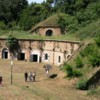
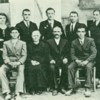
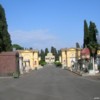
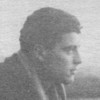
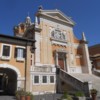
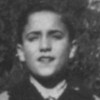
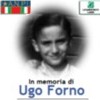
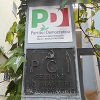

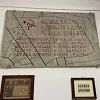
On April 25th,
2015, the 70th anniversary of the Liberation,
the 3rd District of Rome Municipality,
the 4th District Adult Disabled Unit,
TUR (Trekking Urbano Romano), in collaboration with Circolo
Culturale Montesacro, organized a walking route reaching the
places linked to the Resistenza in Montesacro and Val Melaina,
where excerpts were read from the book "I ribelli dell'oltre
Aniene" ("The Rebels from the Over-Aniene")
edited by Stefano Prosperi, Massimo Taborri, Antonio D'Ettorre
and Piero De Gennaro of Circolo Culturale Montesacro. Also the
Vincenzo Bellini Band of Montesacro and the Rifugio Casaletto
took part. Moreover the Montesacro branch of ANPI (National Association
of Italian Partisans), the ASL (Local Health Authority) Rome A
and Latium Region joined the initiative.
On January 20th, 2021 two more Stolpersteine
were laid, after those for Funaro family, mentionned in one of
the previous paragraphs. In via Monte Tomatico 1 a Stolperstein
was laid in front of Ferdinando Agnini's house, while in via Monte
Nevoso, 12, a Stolperstein
was laid in front of Orlando Orlandi Posti's house.
On December 21st, 2021 on the railings gate on
the Via Maiella side of the Corso Sempione public gardens (Caio
Sicinio Belluto Park), a Memory
Panel dedicated to the Funaro family, Ferdinando Agnini and
Orlando Orlandi Posti was affixed, with a map of the neighborhood
showing the site of the houses of Funaro family (via Maiella,
15), Agnini's (via Monte Tomatico, 1) and Orlandi Posti's (via
Monte Nevoso, 12). The panel is the first of the “Fiore del
partigiano” (Partisan's Flower) project, started in 2017,
carried out by students of the Aristofane high school, coordinated
by Professor Maria Rosati (link).
On January 11th, 2023, two stolpersteine
were placed on the sidewalk in front of the entrance to the social
housing complex at via di Valle Melaina, 34, where Renzo Piasco
and Antonio Pistonesi lived. The photos of the two partisans were
also hung on the jamb
of the entrance and on the bulletin
board in the entrance hall.
On March 17, 2022, Father Fiorello Piersanti was remembered with
a "Civico Giusto" (Righteous Street Number), that is
a small plaque representing a
carob tree, a symbol of hospitality, fixed to the side of the
facade of the church of SS. Angeli Custodi, where he hid several
students of the Resistenza. The non-profit cultural association
Roma BPA (Rome
Best Practices Award - Mamma Roma and her Best Sons) remembers
with the plaques "Il Civico Giusto" the homes of those
who protected the life of the persecuted, which are identified,
"marked" and recognized through a plaque-symbol that
remembers their celebrates courage and self-denial.
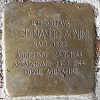
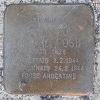
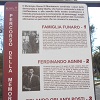
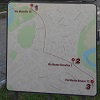
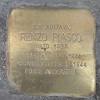
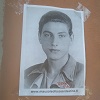
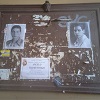
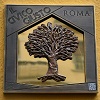
Other
victims of the fascist killers in Montesacro
Many years after the end of the war the fascists came back to
murder people in Montesacro.
On February 22nd, 1980, three armed fascists broke
in 114, Via Monte Bianco into the house
of Valerio Verbano, an 18-year-old Roman
student, militant of the Communist group Autonomia operaia. The
three abducted Valerio's parents in a room, waited for Valerio
to return from school and murdered him with a gunshot. It seems
difficult to think that such a complex ambush was only due to
ideological conflicts. Valerio was investigating drug trafficking
in which the fascists were involved up to their necks, and evidently
he had discovered something important.
Valerio is remembered by a plaque
in front of his house, which is constantly the destination of
the citizens' memory, and by a mural
in via Monte Cervialto, in the Tufello district, inaugurated on
February 22nd, 2021, on the 41st
anniversary of his killing. The mural was painted by the Neapolitan
artist Joris on the facade in via Monte Cervialto of the "Federico
Cesi" State Professional School in via Sarandì, 11
and was funded by the III Municipality and the Lazio Region.
On February 22nd of each year Valerio is commemorated
in Montesacro, also in 2024, and
in 2006 an internal avenue of the Parco delle Valli of III Municipality
was named after Valerio Verbano.
Only four months later, on June 23rd, 1980, and only 300 meters away,
two fascist killers assassinated judge Mario
Amato, who had investigated the fascist subversion with perspicacity
and professionalism, exposing its connivance with state apparatuses
and identifying its organizational structure. Mario Amato was
killed in viale Jonio, near
the corner with via Monte Rocchetta, while he was waiting for
bus 391 to go to work at the court of law in piazzale Clodio.
The escort he had asked for, being in obvious danger of his life,
had been denied him for futile reasons.
Mario Amato is remembered by a stele
at the point where he was killed.
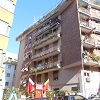
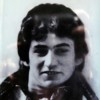
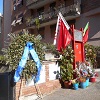
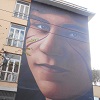
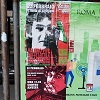
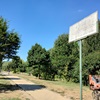
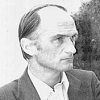
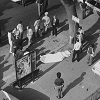
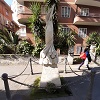
Ferdinando
Agnini known as
"Nando" (Catania, August 24th
1924 - Rome, March 24th
1944), (stolperstein)
son of Gaetano and Giuseppina Longo; he bore the name of his grandfather,
who took part in the Fasci Siciliani uprising (1889-1894), while
his father was a journalist who had refused to take the fascist
party card. Young Agnini was a second year medical student and,
immediately after September 8th, 1943 armistice, devoted himself
to organize in Rome university and high school antifascist students
of Monte Sacro, in "a force capable of arousing in the
Italian cultural tradition, steeped in skepticism and idealism,
the forces needed to a resurgence of the individual and collective
awareness". On 31st October of the same year he had
founded the ARSI, Associazione rivoluzionaria studentesca italiana
(Revolutionary Association of Italian Students), which
in February 1944 will be merged into the Unione Studenti Italiani
(Italian Student Union). As a leader of ARSI the young
man started, with his comrades, to collect weapons and useful
information in the fight against the nazis. Ferdinando Agnini
was unanimously described as a very active young man, who left
his house at dawn and returned after curfew to organize actions
against the nazis and the fascists, in collaboration with groups
of Communist patriots of the Fifth Zone, in order to keep the
Resistenza fighters in touch between them. He also edited and
printed the journal "La nostra lotta" ("Our
Fight"). He was also a member of partisan Brigade Garibaldi.
Once escaped February 3rd roundup, 1944, thanks to the
warning spread by Orlando Orlandi Posti, the whole family remained
in hiding, but then they returned home, in 1, via Monte Tomatico,
thinking that the storm had calmed down. On February 24th,
1944, the spies Testorio and Scarpato led the police to Agnini
residence, where they found his mother and two brothers, and waited
for Ferdinando to come back: the events remind somehow the ambush
to Valerio Verbano, thirty-six years
later, and in the same neighborhood of Montesacro. Once the fascist
captured Agnini, they beat him in his house and then again at
Montesacro police station, where a policeman, Salvatore Morello,
pretended he was his friend and offered him to deliver a note
from his father. In the note Ferdinando asked his father to warn
his close friend of the danger. The following day even his father
Gaetano was arrested and hauled to via Tasso jail, where he underwent
torture. Ferdinando was dragged in the same prison, "at
the disposal of Aussen-Kommando under a police investigation",
where he was repeatedly tortured (twelve times in fifteen days)
and then murdered at the Fosse Ardeatine, where he is buried in
tomb No. 28 of the mausoleum.
After the Liberation, in the lobby of the municipal
building which at the time hosted the classical lycée
"Quinto Orazio Flacco", in Monte Sacro, a plaque
was affixed that reads: "In questa Aula - Pur in oscuri
tempi di vivere servile - A forti e liberi sensi - Educò
mente e cuore - Ferdinando Agnini - che alle Fosse Ardeatine il
24.3.1944 - Immolava - Vittima consapevole - La sua giovinezza
all'umanità libera - Professori e studenti lo vollero qui
ricordare" ("In this hall, even in dark days
of servile life - Ferdinando Agnini educated his mind and heart
to strong and free feelings - He sacrificed - as a conscious victim
- his youth to free humanity - at the Fosse Ardeatine on March
24th 1944 - Professors and students
wanted to commemorate him").
A street in Catania city center is dedicated to Ferdinando Agnini,
as well as the municipal gymnasium
of viale Adriatico, a former boarding school for female overseers
of the fascist youth organization GIL (Gioventù Italiana
del Littorio), which hs been dedicated to him on March 24th,
1985, in the 41st anniversary of Fosse Ardeatine
massacre, as reported in the plaque
affixed besides the entrance (see
his data file on ANPI website) (see his record
from Fosse
Ardeatine Mausoleum
website). (photo of the Fosse Ardeatine
grave).
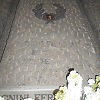
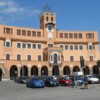
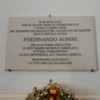
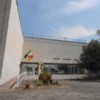
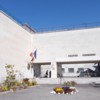
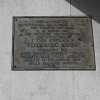
Orlando
Orlandi Posti,
known as "Lallo" (Rome, March 14th
1926 - March 24th 1944) (stolperstein)
he was from Rome, from a family of Umbrian origin, from Piegaro
(Perugia), son of Luigi, a clerk, and of Matilde Servoli. He was
a student of teaching high school "Giosué Carducci",
but in 1938 the death of his father, who had cancer, left his
family in serious financial straits and Orlando abandoned his
studies and started to work as an extra in Cinecittà studios.
He was a leader of ARSI, together with Ferdinando Agnini, who
lived a few steps away from his house. He took part in the fight
against the fascists in Pietralata and Porta San Paolo with an
old musket. On February 3rd, 1944, he managed to save his
comrades from a nazi raid in the neighborhood. Then he took care
to drop in to his house, in 14, via Monte Nevoso, in order to
reassure his mother, and then at 11:30 he tried to greet the girl
he loved, Marcella, the daughter of Achille Bonelli, the owner
of the bar Bonelli in Piazza Sempione (today
"Tosto", formerly "Angolo Russo", formerly
"Zio d'America"). Outside the bar he found a squad of
fascists and nazis in a car, waiting for him, who caught him and
imposed him a long wait, until 2:00 PM, in the car in front of
the bar, perhaps in the hope of catching other antifascists. During
his wait his mother reached him, and in vain she tried to talk
with him, then Marcella got there, and could give him a nod. He
was then brought to via Tasso jail, in cell
no. 5, where he spent his eighteenth birthday "at
the disposal of Aussen-Kommando under a police investigation".
On March 24th, he was murdered at the Fosse
Ardeatine, where he is buried in tomb
No. 108 of the mausoleum.
Orlando was awarded of the silver medal for military valour for
sacrifying "his noble life which he had devoted to the
cause of freedom".
The small notes he wrote to his mother and to Marcella, written
in via Tasso with scraps of pencil lead, sent by his mother concealed
in the shirt collars, and brought out the same way, were published
in 2004 by Donzelli Editore with the title: "Roma '44
- le lettere dal carcere di via Tasso di un martire delle Fosse
Ardeatine" ("Rome 1944 - letters from via Tasso
jail by a martyr of the Fosse Ardeatine") edited by Loretta
Veri with an introduction by Alessandro Portelli. In 2009 Mondadori
published Edgarda Ferri book
"Uno dei tanti: Orlando Orlandi Posti ucciso alle Fosse
Ardeatine. Una storia mai raccontata" ("One of the many: Orlando Orlandi
Posti killed at the Fosse Ardeatine. An untold story."
The Montesacro-based punk group "Cannatrix" published
the comics tale "Orlando
uno dei tanti - una storia di Montesacro" ("Orlando
One of the Many: - A Montesacro story" with drawings
by the cartoonist Stefano Artibani, born and raised in Montesacro
(see his data
file on ANPI website) (see his record
from Fosse
Ardeatine Mausoleum
website).
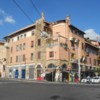
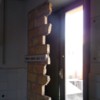
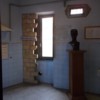
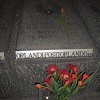
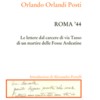
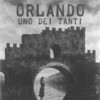
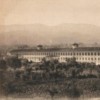
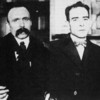
Vito
Artale, (Palermo,
March 3rd 1883 - Rome, March 24th
1944), son of
the late Antonino and of Maria Anna Amodei, he lived in via della
Cisa, 9. He was a Lieutenant General of the Technical service
of artillery, Gold Medal of Military Valor in memory. He took
part as an artilleryman in the war of Libya (1911-12) and in the
First World War with the rank of captain, he was later promoted
to major and subsequently he was military attaché at the
Italian Embassy in Berlin. Since 1929 he was deputy director of
Terni weapons factory
and then director, in Rome, of the Laboratory of optical glass
of the Army, which under his leadership became the most important
Italian plant for the production of optical glasses.
After 8th September 1943 armistice, Vito
joined the Resistenza, and was in contact with the clandestine
military front of Colonel Montezemolo; he organized sabotage in
the military establishments under his command, subtracting to
the nazi occupants and putting in a safe place, materials of invaluable
military importance and, when this was not possible, making the
equipment unusable, in order to avoid it was brought to Germany.
Futhermore he refused to give the Germans the names and addresses
of the factory workers, to whom he paid a salary to prevent them
being forced to work for the Germans. Artale was put in retirement,
but continued the fight by subtracting machinery, accessories
and measuring instruments from a barracks in Cecchignola, Rome,
controlled by the German police, and hiding them in a rented warehouse.
In another clandestine space he hid the instruments taken from
the military establishments in Via Marsala. Artale was arrested
by the Gestapo nazi police on December 9th,
1943, at via Marsala, 102, in the military establishments he managed,
while trying to convince the workers hired by the Nazi-fascists
not to dismantle the machinery and electric furnaces of the glassworks.
He was imprisoned in Via Tasso jail, where he was often tortured,
although he was seriously ill, until he was murdered at the Fosse
Ardeatine, where he was buried in tomb
No. 64 of the mausoleum, until hos body was transferred to
another burial. (see
his data file on ANPI website) (see his record
from Fosse
Ardeatine Mausoleum
website).
Riziero
Fantini, (Coppito,
L'Aquila, April 6th, 1892 - Rome, December 30th,
1943) son of Adolfo
and Maria Apollonia Ciotti, was an anarchist worker. He was married
with Marziana Taggi, and the couple had four children Adolfo,
Furio, Romano and Polimnia. Riziero came from a very poor family,
with socialist tradition, his father worked in a brick kiln. He
went to primary school until the third form, the highest grade
he could attend in his village. When he was 15 years he founded
the circle of PSI (Italian Socialist Party) of his native village.
In 1910 Fantini dodged conscription and emigrated to the United
States, where he worked as a labourer, and attended evening school;
he joined the anarchist movement, meeting Nicola
Sacco e Bartolomeo Vanzetti, and writing articles for the
Italian immigrants' newspaper "La Scintilla"
("The Spark"), which he signed "Jack"
as a tribute to Jack London, which
he admired very much. He also had an exchange of mail with Nicola
Sacco, and the letters were found by his children and published
after the war. Together with other comrades, he traveled extensively
on foot in Central America and reached Ecuador to promote there
anarchist ideas. In 1921 Riziero was back in USA, from where he
was expelled, and came back in Italy, spurred by the news of the
insurrections that broke out at the end of the war; he settled
in the Marche, where he formed a committee in favor of Sacco and
Vanzetti, also publishing articles on the anarchist journal Umanità Nova, and for this
reason the police kept a tab on him. He also wrote articles on
the journals "La Frusta" and "Libero
accordo".
At the advent of fascism, Fantini moved to Rome, where he could
more easily evade controls. He built himself a little house at
7, Via Calimno, near piazzale Jonio. In Rome he was also a friend
of the anarchist leader Errico Malatesta.On
August 5th 1922 he was arrested in Montesacro
by the Carabinieri police during an extended search for weapons
and ammunitions, after the general strike of August 1st,
called by the Alleanza del Lavoro (Alliance of Work) in order
to protest against the blackshirts militia's brutality and trying
to hinder the taking of power by the fascism.
The Rome's local news of Il Corriere della Sera newspaper
of August 6th, 1922, so described the roundup:
<<Following the disturbance that occurred during the
strike of the last few days, the police authorities, in agreement
with the Carabinieri, have ordered a thorough search in "Aniene
Garden City" neighborhood, where numerous Communists and
Anarchists lurk. This morning at 3:00 at Porta Pia the gathering
of 200 carabinieri armed with muskets took place. The policemen
got on their trucks and at dawn burst into Garden City center
[...] they minutely searched the shacks and hovels where the
construction workers live. The sweep led to the arrest of 12 dangerous
subversives, including a well-known anarchist and a Russian Bolshevik
[...] Revolvers, ammunition and knives have been found>>.
(Gentili,
2009)
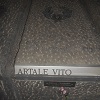
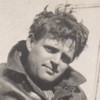
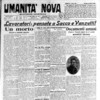
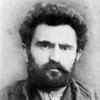
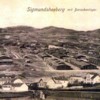
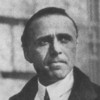
In 1940 Riziero joined
the Italian Communist Party in Montesacro-Val Melaina, becoming
responsible for an undercover cell. After the armistice, organized
the antifascist resistance with other anti-fascist workers and
kept meetings in his house. On 21st December 1943 he was arrested
in his house by the SS with two of his four children (Adolfo and
Furio) and with Mario Menichetti. Fantini was locked up in the
third row of Regina Coeli jail in Rome.
During the imprisonment of her husband and sons, Marziana Taggi
kept on supporting the Resistenza, carrying leaflets, weapons
and bombs in her shopping bag. Marziana communicated with her
jailed family members with small notes, hidden inside the rigatoni
pasta tubes, which she brought them in jail.
In the prison Riziero was repeatedly tortured and underwent a
summary trial, after which he was shot in Forte Bravetta on December
30th, 1943, together with his comrades Italo
Grimaldi and Antonio Feurra, all charged with anti-German activities.
Riziero refused the last rites, since he was an atheist, and the
prison chaplain gave Fantini's wife her husband's Longines watch,
all broken from the beatings he got and a farewell note saying:
"Dear, my last thought is for you. I die with your name
and our sons' names on my lips. I wish you all the best. Yours
Riziero." (see
his data file on ANPI website)
Raffaele
Riva (Sant'Agata
Bolognese, Bologna, December 29th, 1896 - Rome, January 31st,
1944), son of
Alfredo and Carolina Parmigiani. He was a Communist Catholic mason,
married with Maria Luigia Nepoti, with two children, Walter e
Leda. Veteran of the First World War, he was taken prisoner and
confined in the very harsh Sigmundsherberg
prison camp, in Austria. At the advent of fascism he was forced
to leave his town to escape fascist persecutions, so he moved
with his family to Garfagnana for one year and then to Rome, Montesacro,
where many immigrants from Emilia dwelt. Even in Rome Riva was
targeted by the police, who imposed him the house arrest, in 7,
via Cervino. There he lived with his family in a small house built
in the garden of the cottage of colonel Mario Ottalevi commander
of the 12th "Casale" infantry regiment,
who was shot by the nazis on September 10th,
1943, on the island of Santa Maura, near Kefalonia, Greece, having
refused to order his men to hand over their individual weapons,
after handing over the collective weapons.
In spite of being arrested, Riva continued his clandestine political
activity and, after September 8th, 1943 armistice, he was one of
the Resistenza organizers in the neighborhood, taking part in
boycotts, gathering weapons for the partisan bands, releasing
leaflets against the Nazis. Riva was arrested at his home during
December 21st, 1944 roundup, then dragged to
via Tasso and locked up in the third row of Regina Coeli jail
in Rome, in cell no. 346. His family members could communicate
with him shouting from Gianicolo, the hill that overlooks the
jail, following the ancient Roman tradition. After a summary trial,
he was sentenced to death by a Nazi military court for anti-German
activities and shot by the battlements of Forte Bravetta, together
with Giovanni Andreozzi and other eight anti-fascists. Riva walked
quietly to execution after refusing the blindfold and after smoking
his last cigarette. Before falling, he shouted: "Viva
l'Italia libera!" ("Hooray for Italy free!")
(see his data
file on ANPI website)
Aldo Banzi (Rome, January 23rd, 1921 - March 24th, 1944) son of the late Vincenzo and of Elisa Manzatti, surveyor, employee and militant of Movimento Comunista d'Italia - Bandiera Rossa, (Communist Movement of Italy - Red Flag), a movement dissident from Italian Communist Party. He was resident at Via Mirandola 30, near Roma Tuscolana railway station. He was enlisted in August 1940 as an employee of the Ministry of the Navy with the rank of 2nd Head paymaster, then he was recognized as 3rd degree war disabled by the Military High Commission of Celio Hospital. He was arrested in Rome by the nazi SS on March 6th, 1944, imprisoned in via Tasso jail "at the disposal of Aussen-Kommando under a police investigation", and finally murdered at Fosse Ardeatine, where he is buried in tomb No. 119 of the mausoleum. A road in Rome's neighborhood of Tor de Cenci was dedicated to him (see his record from Fosse Ardeatine Mausoleum website).
Renzo Piasco (Rome, June 13th, 1925 - March 24th, 1944), (stolperstein) born in Trastevere, in the city center, but moved to via Val Melaina, 34; then in via Scarpanto, 45. He was son of Paolo, a Communist taxi driver who was confined for political reasons in Ustica island and then into hiding, and of Maria (Annita) Pennazzi. He was a railway worker, an assistant engine driver, fired for refusing to move to Northern Italy to work for the fascist republic. He was wearing blue work overalls when he was killed. He was also a dodger to the fascist republic conscription. Militant of Movimento Comunista d'Italia - Bandiera Rossa (Communist Movement of Italy - Red Flag), a movement dissident from Italian Communist Party, he was repeatedly arrested for carrying out anti-fascist activity in Montesacro. Renzo fought on 10th September, 1943 at Porta San Paolo and on February 3rd the spy Armando Testorio came to his house and drew him outside, until he was arrested by the nazi SS in piazza Sempione while he carried a rucksack full of propaganda leaflets and weapons. He was dragged to via Tasso jail, "at the disposal of Aussen-Kommando under a police investigation", tortured and in the end murdered at the Fosse Ardeatine, where he is buried in tomb No. 115 of the mausoleum (see his record from Fosse Ardeatine Mausoleum website).
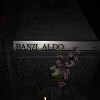
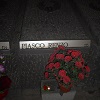
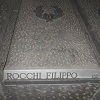
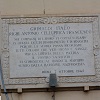
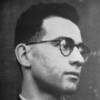
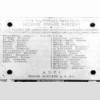
Antonio Pistonesi known as Giacomo (Rome, February 9th, 1925 - March 24th, 1944), (stolperstein) son of Antonio and Caterina Falaschetti, he was a waiter and worker in a mill. his name had to be Giacomo, in honour of the Antifascist leader Giacomo Matteotti, murdered by the fascists few months before his birth, but the registry officer forced his father to register his son with a different name. He was a militant of the Italian Communist Party of Val Melaina, he fought on 10th September, 1943 on Salaria road and at Prati Fiscali. On February 4th, 1944 the spy Scarpato led the nazis to his house, but he wasn't there, so his sister Giulia was taken as a hostage and dragged under threat in the suburb's streets, calling Giacomo aloud, in order to drive him to give himself up, but it didn't happen. The infiltrator Testorio managed to hook him and, promising to entrust him to the Resistenza to take shelter in Mentana, a town near Rome, gave him an appointment at 11:00 am in largo Brancaccio, but he went there with the nazis, who hauled Giacomo to via Tasso jail, in cell no. 3, "at the disposal of Aussen-Kommando under police investigation", while the spy Testorio kept on double-crossing, reassuring Pistonesi family. Giacomo came out from the jail just to be murdered at the Fosse Ardeatine, where he is buried in tomb No. 43 of the mausoleum. (see his record from Fosse Ardeatine Mausoleum website).
Filippo Rocchi (Fara Sabina, Rieti, February 13th, 1909 - Rome , March 24th, 1944) son of the late Domenico and Elvira Bernardini, retailer (or labourer?), member of PCI, Italian Communist Party, and of CLN, Comitato di Liberazione Nazionale (National Liberation Committee), he lived in 25, via delle Cave Fiscali, but he was resident in Via Principe di Piemonte 107 (today via Giolitti, beside Termini Railway Station). He was a war wounded, and he was discharged as corporal. He was arrested for joining a communist gangs and possession of weapons in the December 21st, 1943 roundup, at 7:30 AM, by the German SS and by the PAI (Police of Italian Africa), led by Federico Scarpato, who savagely beaten him, breaking him an arm and causing him kidney injuries. He was detained in Via Tasso and then at Regina Coeli "at the disposal of the German Military Tribunal - awaiting trial" and murdered at Fosse Ardeatine, where he is buried in tomb No. 135 of the mausoleum (see his record from Fosse Ardeatine Mausoleum website).
Italo Grimaldi (Budrio, Bologna, September 5th, 1899 - Rome, December 30th, 1943), son of Vincenzo and Rosa Pezzoli, father of Amneris. He was a militant of the Italian Communist Party of Montesacro-Val Melaina. He lived in 7, piazza Matese, a few steps away from Agnini, Orlandi Posti and Riva. He had a butcher's shop in piazza Sempione (according to other sources in via Gargano). He was already reported in 1934 by the Police because in his butchery: "he would at lenght entertain with political talks with some of his acquaintances. These talks would be marked by the clearest anti-fascism". Italo is also remembered, together with Antonio Righi and Francesco Celluprica, by a plaque placed in the former Testaccio Slaughterhouse, on 7 October 7th, 1945 by workmates to remember the slaughterhouse employees who died during the war. Italo was arrested on December 20th, 1943 at 11:00 AM in his shop, by a SS patrol, flanked by three fascists, including Federico Scarpato, who later on arrested also his brother Guido and Vittorio Mallozzi, who find himself there. During the house search Scarpato stole several things, including a whole pig, legally owned and 400,000 liras in cash. Italo Grimaldi was then tortured at lenght in the third row of Regina Coeli jail and shot at Forte Bravetta for anti-German activities.
Antonio Feurra (Cagliari, September 22, 1893 - Rome, December 30th, 1943) son of the late Salvatore, coming from Seneghe (Oristano, Sardinia), married with Lavinia Angelucci, greengrocer (known as "er patataro" meaning "potato monger") he lived in 5, viale Gottardo and had a stall in the nearby Montesacro district market. He was a militant of the Italian Communist Party of Montesacro-Val Melaina, arrested on the morning of December 21st, 1943 by a SS patrol, directed by Federico Scarpato, who beaten him savagely and threatened his wife to arrest her. He was shot at Forte Bravetta for anti-German activities.
Giovanni Andreozzi (Rome, August 2nd 1912 - January 31st, 1944), member of CLN, Comitato di Liberazione Nazionale (National Liberation Committee), Communist Catholic, shot at Forte Bravetta for anti-German activities, together with Raffaele Riva and other eight anti-fascists.
Paul Leo Lauffer (or Lauffner?) (Koenigsberg, April 18th, 1902 - Rome, March, 7th, 1944) son of Paul and Natalia Meyer, German dentist and militant of Partito d'Azione (Action Party), he escaped from Pomerania and took shelter by the Rainelli family, at 8, via Monte Argentario, in order to escape anti-Jewish persecution. He was captured in February 3rd, 1944 roundup and, even though was tortured, he didn't disclose the names of his comrades nor revealed the weapon depot in the garden of Rainelli house. In the end he was shot for anti-German activity in Forte Bravetta, together with nine other anti-fascists, Giorgio Labò, Antonio Bussi, Concetto Fioravanti, Vincenzo Gentile, Francesco Lipartiti, Antonio Nardi, Mario Negelli and Augusto Pasini. The mass shooting was a retaliation for the attack of March 5th by theTorpignattara partisans to the fascist headquarters of Quarticciolo, during which a Nazi soldier was killed.
Amilcare
Baldoni (Vacone,
Rieti, 1883 - 12 April 1944) son of the late Federico, anarchist
and cobbler (or maybe a clerk), was in the police records since
1907; then he emigrated to France until he was expelled in 1936
for the sanctions against Italy's invasion of Ethiopia; then he
settled in Rome's suburb of Tufello, in the so-called "Frenchmen
houses". It is unclear how and when he was killed, according
to some sources he might be an unidentified victim of the Fosse
Ardeatine massacre. According to others he was arrested at Vacone,
in Sabina area, where he had moved to fight the nazis, by the
20th SS Polizei Regiment, in the framework of
operation "Osterei" in the provinces of Terni and Rieti.
The nazis, together with members of the national guard of the
fascist republic, arrested several people thanks to tip offs,
and Baldoni, defined as the chief of the local partisans, would
have been shot together with Tax Police cadet non-commissioned
officer Beniamino Minicucci at Vacone. A plaque
in Poggio Mirteto (Rieti) reports Amilcare Baldoni and Beniamino
Minicucci as victims of the nazi and fascist in the area of mount
Tancia.
Valerio Gentili (2010,
pag. 16), describes
the founding in Roma, autumn 1914, of the city board of "Fascio
rivoluzionario d'azione", a left wing coalition supporting
the participation of Italy to World War I. The board included,
representing Revolutionary Socialists, a man named Amilcare Baldoni,
who was maybe the same person described in this paragraph. The
same author (2010)
describes two meetings
held in 1919 at Amilcare Baldoni house, the first on July 7, in
which Anarchists, Arditi (former storm troopers) and Republicans
talked about a possible insurrection in response to a hypothetical
nationalist coup (pag.
67), and
another on July 16, in order to organize support actions for the
comrades arrested in a sequence of police raids (pag. 73).
BIBLIOGRAPHY:
AA.VV.
(1978) Quaderni della Resistenza laziale, n.8. Regione Lazio,
Stilgraf, Roma.
BARBALISCIA Marco (2022) A piazza Sempione un nuovo ‘Civico
Giusto’, il terzo nel quartiere: inaugurata la targa in onore
di padre Piersanti. Roma h24-Montesacro 18 marzo 2022 link
BRACCI TORSI Bianca (2002) Un episodio poco noto della Resistenza
romana I "Caimani del bell'orizzonte". Liberazione
- 25-04-2002 link
CAPPONI Carla (2000) Con cuore di donna. Il Saggiatore, Milano.
image
CAZZULLO Aldo (2015) Possa il mio sangue servire. Rizzoli,
Milano.
CERVI Alcide (2010) I miei sette figli. Einaudi, Torino.
CIRCOLO CULTURALE MONTESACRO (2014) I ribelli dell'oltre Aniene.
Edizioni Chillemi, Roma.
CORVISIERI Silverio (2005) Bandiera rossa nella resistenza romana.
Odradek, Roma.
D'AGUANNO Claudio (2004) Un magma resistente. https://fisicamente.net
link currently (January
14th, 2023) not available
FENOGLIO Beppe (1985) Primavera di bellezza. Einaudi,Torino.
FERRI Edgarda (2009) Uno dei tanti: Orlando Orlandi Posti ucciso
alle Fosse Ardeatine. Una storia mai raccontata. Mondadori,
Milano.
GENTILI Valerio (2009) La legione romana degli Arditi
del Popolo. Purple Press, Roma.
GENTILI Valerio (2010) Roma combattente. Dal "biennio
rosso" agli Arditi del Popolo. Castelvecchi, Roma.
GHIANDONI Laura (2020) 1 febbraio 1944, muore Massimo Gizzio,
eroe della Resistenza. Romah24 - Flamino-Parioli, February 1st,
2020 link
GIAMMARIA Gioacchino (1978) Quaderni della Resistenza laziale.
8 - Dati sulla Resistenza in Ciociaria. Regione Lazio, Roma.
GILONE Barbara (2016) Adolfo Sansolini. Memorie d'inciampo,
Roma.
link
GILONE Barbara
(2016) Alfredo Sansolini. Memorie d'inciampo, Roma. link
GRELLA Pasquale
(1987) Appunti per la storia del movimento anarchico romano dalle
origini al 1946. De Vittoria, Roma.
LIPAROTO Andrea (2009) “Uno dietro l’altro andavano
a morire contro il terrapieno”. Patria Indipendente,
25 ottobre 2009: 7-12. link
MARTINI Andrea (2019) Dopo Mussolini. I processi ai fascisti e
ai collaborazionisti (1944-1953). Viella, Roma.
ORLANDI POSTI Orlando (2004) Roma '44. Le lettere dal carcere
di via Tasso di un martire delle Fosse Ardeatine. Donzelli,
Roma.
OSSICINI Adriano (1999) Un'isola sul Tevere. Editori Riuniti,
Roma.
OSTI GUERRAZZI Amedeo (2015) Episodio di Forte Bravetta - 7 marzo
1944. Atlante delle Stragi Naziste e Fasciste in Italia. link
PAVIA Aldo (2013) Resistenza a Roma. Una cronologia. https://anpcnazionale.files.wordpress.com
link
PI.MAR. (2015) La storia dimenticata del partigiano Antonio Feurra.
La Nuova Sardegna, May 30th, 2015 link currently (January
14th, 2023) not available
POMPEO Augusto (edited by) (2000) Forte Bravetta 1932-1945 - Storie
Memorie Territorio. Comune di Roma XVI Circoscrizione, Anpi,
Provincia di Roma.
PORTELLI Alessandro (2012) L'ordine è già stato
eseguito. Feltrinelli, Milano.
ROSSI Tommaso (2016) Episodio di Vacone 12.04.1944. Atlante
delle Stragi Naziste e Fasciste in Italia. link
SPIZZICHINO Giancarlo (2012) La deportazione a Roma. in "Le
leggi razziali e la persecuzione degli ebrei a Roma, 1938-1945".
Edited by Silvia Haia Antonucci, Pierina Ferrara. Marco Folin,
Manola Ida Venzo. MuMeLoc, Cerreto Guidi, Archivio Storico
della Comunità Ebraica di Roma. link
TABORRI Massimo (2001) Montesacro e Valmelaina nei 9 mesi della
occupazione nazista di Roma. Workshop "La memoria presente",
Il Manifesto, Circolo Culturale Montesacro, March 8th-29th 2001 link
TROISIO Armando (2014) Roma sotto il terrore nazista. Castelvecchi,
Roma
VISITED
WEBSITES:
ANPI
- Men and women of the Resistenza link
Biographies of the Roman Resistenza link
Gianni Corbi
biography: link.
Hear
the frogs singing ... link
History Institute
Parri - Digital library link
Massacre
of Pietralata - Wikipedia link
Montesacro, 4 stolpersteine to remind nazi-fascist deportations
link
Montesacro
e Valmelaina nei 9 mesi dell'occupazione tedesca a Roma link
Rerum Romanarum
- plaque in memory of Italo Grimaldi link
Roma H24-Montesacro
- Inauguration of a panel link
Valerio Verbano, a 41 anni dalla sua morte il Tufello inaugura
il murale di Jorit link
A Valmelaina due pietre d'inciampo ricordano chi si oppose al
nazifascismo link
Facebook
page on Ferdinando Agnini link currently (March
29th, 2023) not available
http://www.sotziu.it/historia/historia-borghesi-recensione-circolo-gl-sassari%281%29.htm. currently (March
29th, 2023) not available

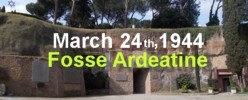
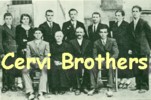



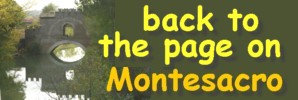
 page
created: June
28th 2015 and last updated:
July
6th, 2024
page
created: June
28th 2015 and last updated:
July
6th, 2024